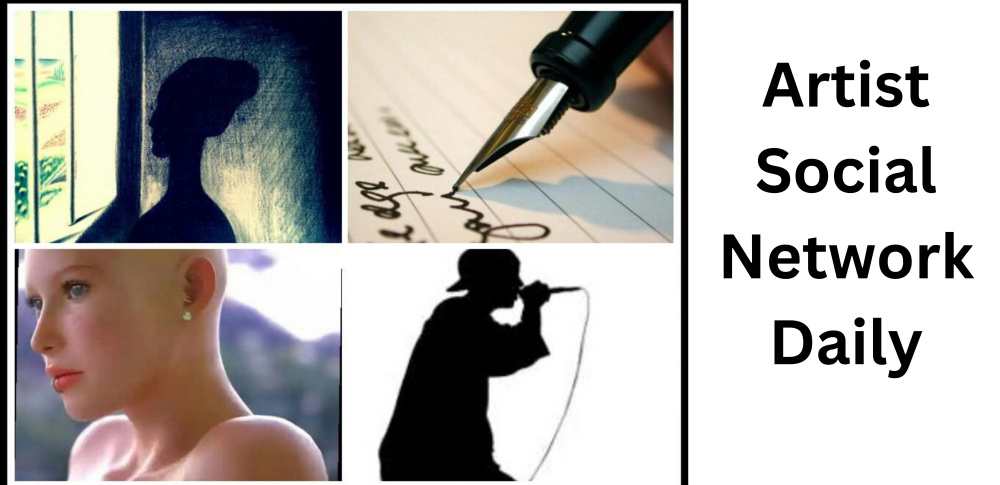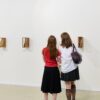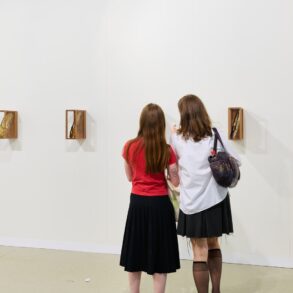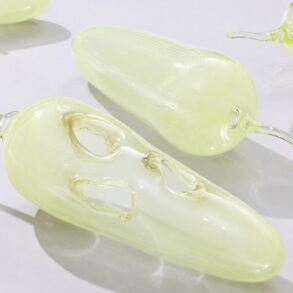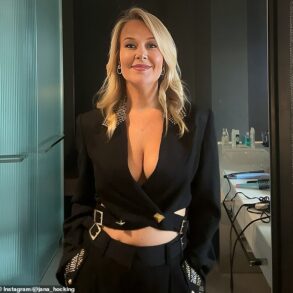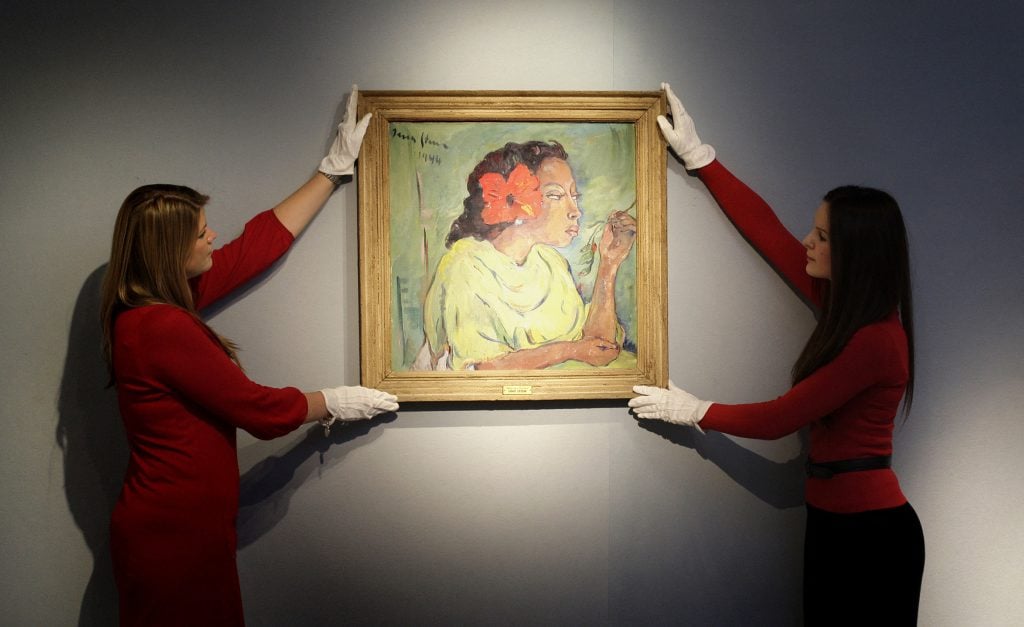
“Art has the power to challenge conventions and provoke thought.” These words are not from a Western art scholar, or a wealthy American sculptor, but from Ethiopian artist Julie Mehretu, who was the best-selling artist in the African art market last year. Her abstract acrylic and ink painting on canvas, Mumbaphilia, sold for $5.8m at a Christie’s auction in 2024, making her the best-selling artist of the year.
And her success is no fluke, either. Over the past few years female artists from the continent have not only gained prominence but have also begun outperforming their male counterparts in auction sales, critical recognition and global influence. Long overlooked, they are now commanding the spotlight – and record-breaking prices.
In 2023, female African artists collectively surpassed men in auction sales for the first time. In 2024, despite a broader decline in the African art market, women achieved a 52.8% share of sales of African art, to the value of $22m, with 452 women represented – an increase from 288 in 2023, according to art research company ArtTactic. The five highest-priced works were all by women, with Mehretu leading the rankings.
Coming in as a close second in terms of sales was the South African modernist Irma Stern (1894–1966), whose works, influenced by German expressionism, still remain in demand almost 60 years after her death. (Pictured: Stern’s Malay Girl with Hibiscus at Christie’s, London)
Works by Nigerian visual artists Njideka Akunyili Crosby and Toyin Ojih Odutola, as well as the South African painter Marlene Dumas, also sold for more than $1m last year in auctions and sales.
This success is even more spectacular when it is put into the context that the year 2024 saw a 27% downturn in the global art market and a 45% downturn in the African art market. It certainly seems that this success is more than a temporary blip in statistics. As Lindsey Dewar, ArtTactic’s chief operating officer, says: “Their presence at the highest levels of the market underscores the increasing recognition and valuation of African women artists.”
Pushing back against male dominance
Historically, the art scene across the African continent, like that in many other parts of the world, has been dominated by men. Women faced significant barriers to entering the art world, including arts colleges that accepted men only and limited access to education.
As a woman artist trying to succeed as an artist in 1920s Cape Town, Stern was faced with a deeply conservative environment that was not open to the idea of a successful female artist. However, she persevered, and in 1927, she won the Prix d’Honneur at an art exhibition in Bordeaux; only two years later in 1929, she represented South Africa at an art exhibition in London. She travelled solo across the African continent and her art was inspired by the people she saw and met on her travels, such as Portrait of a Zulu Woman and Young Pondo Man.
Stern’s success – she represented South Africa multiple times at the Venice Biennale and won the Guggenheim Foundation National Award for South Africa in 1960 – defied the odds for a female African artist at the time. Stern amplified the voices of African women in art and opened the door for many other women to follow in her wake, becoming international sensations on the global art scene where their works command attention at exhibitions and auctions.
Crosby, one of the highest-selling female African artists of 2024, uses the landscape of art to challenge the marginalisation of women. Her 2010 work I Refuse to be Invisible is a beautifully-constructed tapestry of stark patterns and shapes. Blending Western art styles with Nigerian heritage, it celebrates hybrid identities and is a stark reminder of the importance of visibility and empowerment.
In 2022, Crosby’s painting, one in a series of works entitled The Beautyful Ones, sold for $4.7m at Christie’s in New York, setting a new auction record for the artist. A riot of colour, these beautiful acrylics profile the everyday lives of Nigerian children, including several of Crosby’s family members.
In a similar vein, Nigerian artist Toyin Ojih Odutola, who also netted over $1m in art sales in 2024, uses her artwork to drive social change and explore themes including identity and belonging. Ilé Oriaku, her solo exhibition at Kunsthalle Basel in 2024, showcased a selection of charcoal, pastel and pencil drawings on surfaces including paper, linen, and canvas which explored the capacity of language and its limitations. Its resounding success led to Odutola winning the prestigious Wein Artist Prize at a ceremony in Harlem, New York.
UK-based art auctioneers Strauss & Co have also reported a rising demand for works by female African artists, including titan of the South African art world Esther Mahlangu, best known for her vibrant geometric works inspired by the traditions of Ndebele art. I
n October last year a mural by Mahlangu – titled Umuntu ngumuntu ngabantu, which translates from Ndebele as “I am because you are” – was unveiled at the Serpentine Gallery in London. It is Mahlangu’s first public artwork in the UK, and will remain on view in Kensington Gardens until late September 2025.
According to Strauss & Co, two of their biggest-selling artists in 2024 were South African painter Marlene Dumas and Lynette Yiadom-Boakye, a British artist with Ghanaian heritage. Dumas creates haunting and surrealist oil-on-canvas paintings that tend to address political and social themes, and to make the under-represented visible.
Her work Against the Wall is based on images from the media documenting the conflict between Israel and Palestine, and her Great Men portrait series was created in response to Russia’s anti-gay legislation. The Trophy and The Widow, both painted in 2013, are uncomfortable to look at – the former depicts a naked woman chained by guards, the latter a woman staring out at a world she cannot touch – and are intended to speak universal truths about female oppression around the world.
From humble beginnings in apartheid South Africa, Dumas has grown to become one of the most successful living African artists. In 2005, The Teacher became the most expensive work created by a living female artist when it sold for £1.8m ($2.3m) at auction at Christie’s. Only three years later Dumas broke her own record when The Visitor sold for an astounding £3.1m ($4m) at Sotheby’s.
The future belongs to women
The number of women artists from the African continent sold at auction has grown by 130% since 2015, according to ArtTactic. This extraordinary increase, achieved in only a decade, suggests that the future is bright for these talented artists – and is only poised to get brighter.
In March the Ardhi Gallery in Nairobi held a display of works by female Kenyan artists, called The XX Chromosome Exhibition, to celebrate International Women’s Day. It included paintings, sculptures, and photographs, each of which offered a unique perspective on female experiences. Ghanaian-American visual artist Rita Mawuena Benissan is enjoying an outstandingly successful exhibition at the Zeitz Museum of Contemporary Art Africa in Cape Town, which will run until the end of 2025.
As private collectors and museums alike are recognising the contributions women such as Mehretu, Dumas and Odutola, they are poised to redefine the contemporary African art scene. They are not just creating masterpieces; they are shaping culture and sparking vital conversations about identity, gender equality, and social justice at the same time as enjoying high-profile exhibitions and record-breaking sales – and outperforming their male counterparts.
This post was originally published on this site be sure to check out more of their content
